Search Result
| Pathways Recommended: |
NF-κB
|
Results for "
IκB
" in MedChemExpress (MCE) Product Catalog:
2
Isotope-Labeled Compounds
| Cat. No. |
Product Name |
Target |
Research Areas |
Chemical Structure |
-
- HY-10257
-
|
BAY 11-7083
|
NF-κB
Ferroptosis
Apoptosis
|
Cancer
|
|
BAY 11-7085 (BAY 11-7083) is an inhibitor of NF-κB activation and phosphorylation of IκBα; it stabilizes IκBα with an IC50 of 10 μM .
|
-
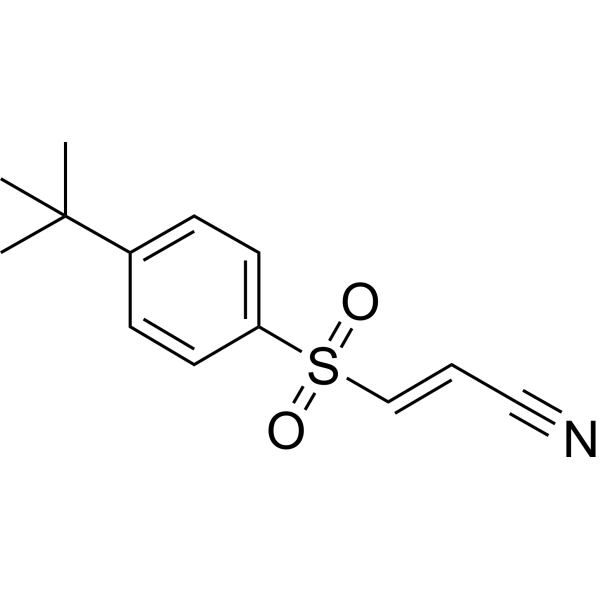
-
- HY-N0694
-
|
Gomisin-C; Schizantherin-A; Wuweizi ester-A
|
NF-κB
|
Inflammation/Immunology
|
|
Schisantherin A is a dibenzocyclooctadiene lignan. Schisantherin A inhibits p65-NF-κB translocation into the nucleus by IκBα degradation.
|
-

-
- HY-107593
-
|
|
IKK
|
Inflammation/Immunology
|
|
PS-1145 (dihydrochloride) is a potent IκB kinase-2 inhibitor with an IC50 value of 88 nM. PS-1145 (dihydrochloride) inhibits activity of NF-κB by blocking IκB kinase phosphorylation in tumor-bearing rats .
|
-
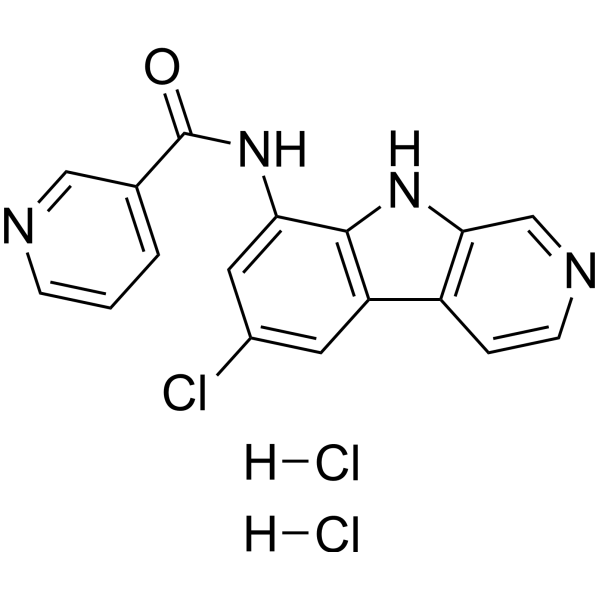
-
- HY-139833
-
|
|
NF-κB
IKK
|
Inflammation/Immunology
|
|
Anti-inflammatory agent 6 blocks the phosphorylation of I kappa b kinase α/β (IKKα/β), IκBα, and nuclear factor kB p65 (NF-κB p65) which is a key controller of inflammation, thereby showing anti-inflammatory potential.
|
-
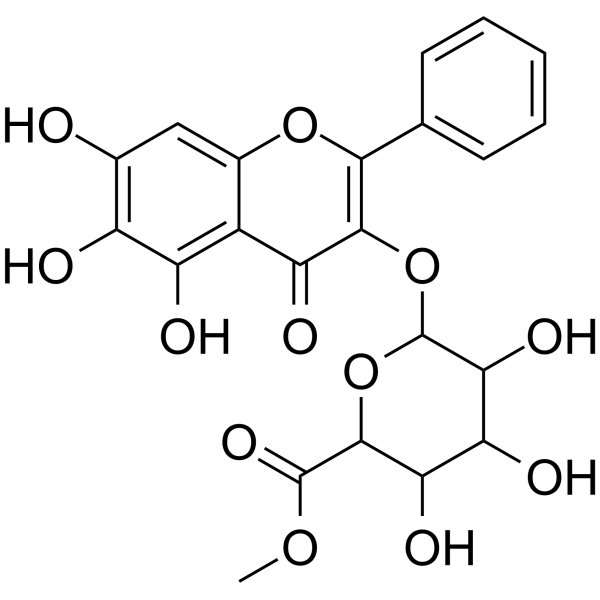
-
- HY-155998
-
|
|
NF-κB
|
Inflammation/Immunology
|
|
NF-κB-IN-11 (Compound 3i) is a NF-κB inhibitor. NF-κB-IN-11 inhibits TNF-α induced activation of NF-κB pathway, and inhibits nuclear translocation of NF-κB. NF-κB-IN-11 down-regulates the expression levels of phosphor-IKK, IκBα, and NF-κB p65. NF-κB-IN-11 has anti-inflammatory activity, and alleviates dextran sulfate sodium-induced colitis in mice. NF-κB-IN-11 (p.o.) shows a MTD more than 1852 mg/kg in mice acute toxicity assay .
|
-
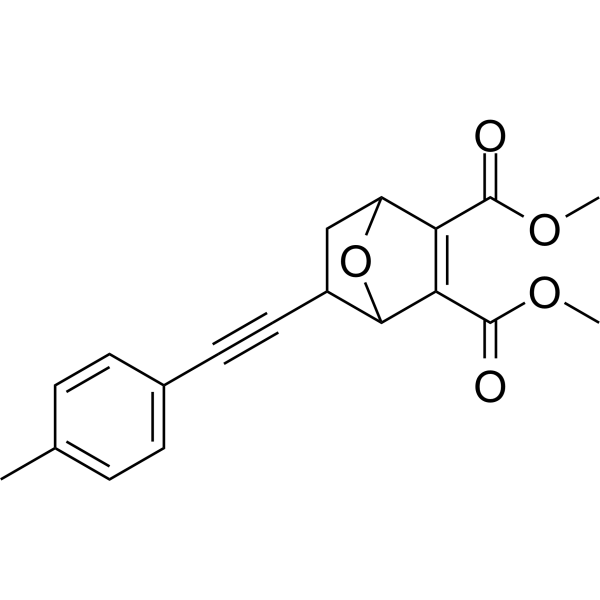
-
- HY-N1987
-
|
|
Apoptosis
|
Inflammation/Immunology
|
|
Cucurbitacin IIb is an active component isolated from Hemsleya amabilis, induces apoptosis with anti-inflammatory activity. Cucurbitacin IIb inhibits phosphorylation of STAT3, JNK and Erk1/2, enhances the phosphorylation of IκB and NF-κB (p65), blocks nuclear translocation of NF-κB (p65) and decreases mRNA levels of IκBα and TNF-α .
|
-

-
- HY-105661
-
|
|
IKK
|
Cancer
|
|
IMD-0560 is a novel IκB kinase β inhibitor.
|
-
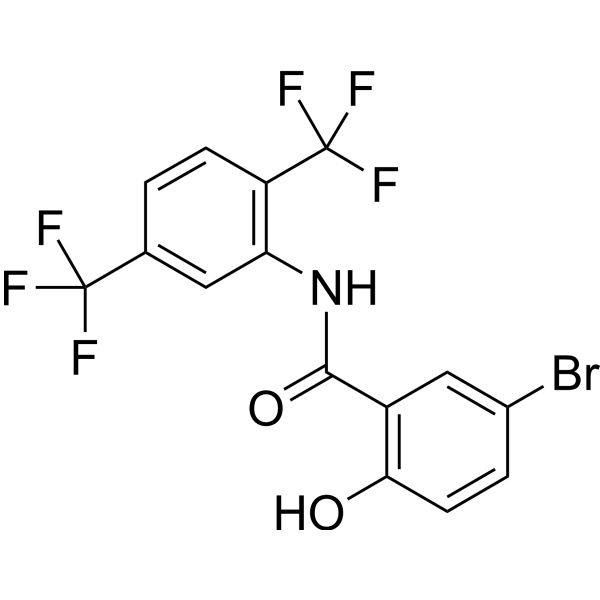
-
- HY-136741
-
|
|
IKK
|
Inflammation/Immunology
|
|
BOT-64 is an inhibitory κB (IκB) kinase β (IKKβ) inhibitor with an IC50 of 1 µM. BOT-64 blocks lipopolysaccharide-induced nuclear factor-κB activation and nuclear factor-κB-regulated inflammatory gene transcription .
|
-
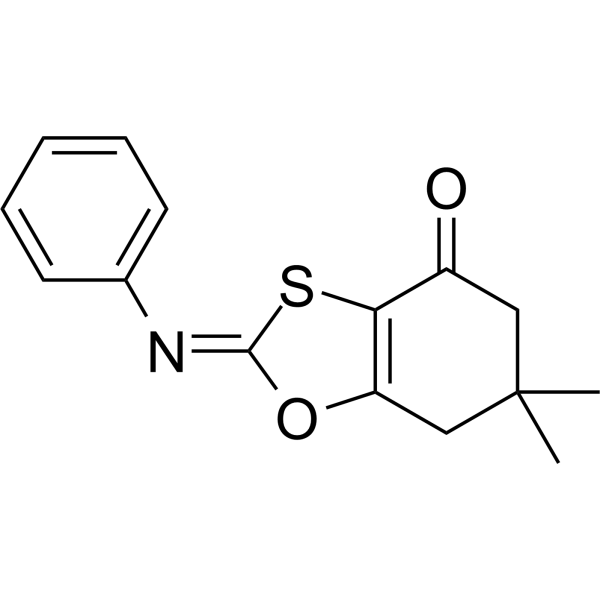
-
- HY-18008
-
-
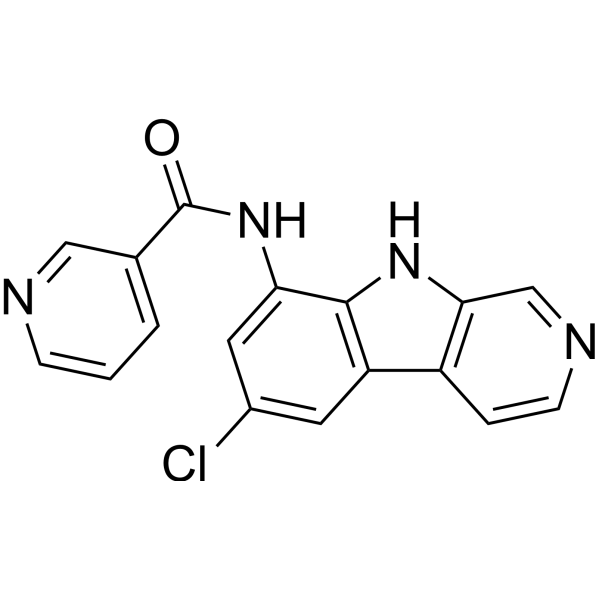
-
- HY-162092
-
|
|
NF-κB
IKK
|
Cancer
|
|
Multi-target Pt (IV), an antitumor agent, suppresses the IKKβ phosphorylation, IκBα phosphorylation and NF-κB p65 phosphorylation and nuclear translocation, leading to blocked the NF-kB signal pathway .
|
-
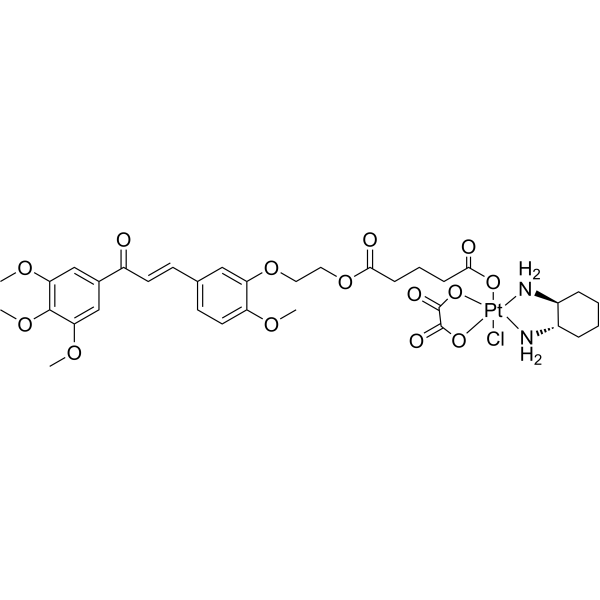
-
- HY-N0629
-
-

-
- HY-N8884
-
|
|
PTEN
Akt
NF-κB
Interleukin Related
TNF Receptor
|
Inflammation/Immunology
|
|
Coelonin is a dihydrophenanthrene with anti-inflammation activity. Coelonin inhibits LPS-induced PTEN phosphorylation. Coelonin inhibits NF-κB activation and p27Kip1 degradation by regulating the PI3K/AKT pathway negatively. Coelonin can inhibit IκBα phosphorylation and degradation and increases the expression of IκBα protein .
|
-
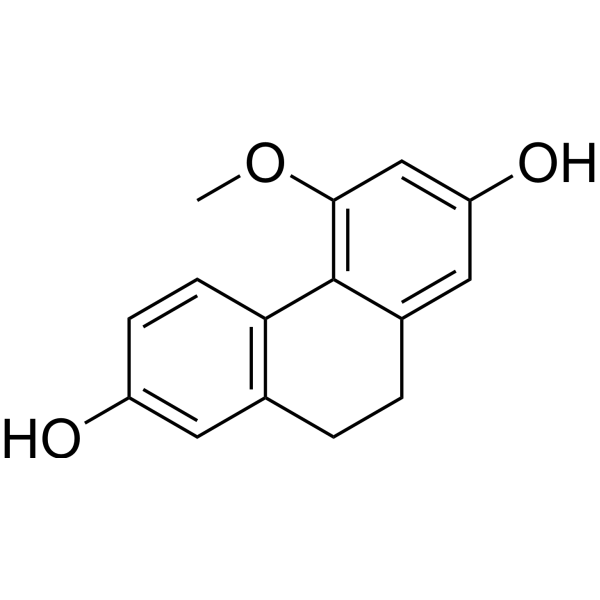
-
- HY-138284
-
|
|
NF-κB
|
Inflammation/Immunology
|
|
Avenanthramide-C methyl ester is an anti-inflammatory agent and NF-κB inhibitor that inhibits the secretion of pro-inflammatory factors. Avenanthramide-C methyl ester inhibits NF-κB activation by inhibiting IKK and IκB phosphorylation and inhibiting proteasome activity .
|
-

-
- HY-B0788A
-
|
|
IKK
Apoptosis
|
Cancer
|
|
LY2409881 trihydrochloride is a selective IκB kinase β (IKK2) inhibitor with an IC50 of 30 nM.
|
-

-
- HY-B0788
-
|
|
IKK
|
Cancer
|
|
LY2409881 is a selective IκB kinase β (IKK2) inhibitor with an IC50 of 30 nM.
|
-

-
- HY-110261
-
|
|
IKK
E1/E2/E3 Enzyme
NF-κB
|
Inflammation/Immunology
|
|
GS143 is a selective IκBα ubiquitination inhibitor with an IC50 of 5.2 μM for SCF βTrCP1-mediated IκBα ubiquitylation. GS143 suppresses NF-κB activation and transcription of target genes and does not inhibit proteasome activity. GS143 has anti-asthma effect .
|
-

-
- HY-13982
-
|
|
NF-κB
|
Metabolic Disease
Inflammation/Immunology
Cancer
|
|
JSH-23 is an NF-κB inhibitor which inhibits NF-κB transcriptional activity with an IC50 of 7.1 μM in lipopolysaccharide (LPS)-stimulated macrophages RAW 264.7. JSH-23 inhibits nuclear translocation of NF-κB p65 without affecting IκBα degradation .
|
-

-
- HY-147836
-
|
|
Akt
NF-κB
JNK
TNF Receptor
COX
|
Inflammation/Immunology
|
|
Akt/NF-κB/JNK-IN-1 (Compound 2i) is an inhibitor of Akt, NF-κB and JNK signaling pathways. Akt/NF-κB/JNK-IN-1 inhibits nitric oxide production with an IC50 of 3.15 μM. Akt/NF-κB/JNK-IN-1 shows anti-inflammatory activities .
|
-
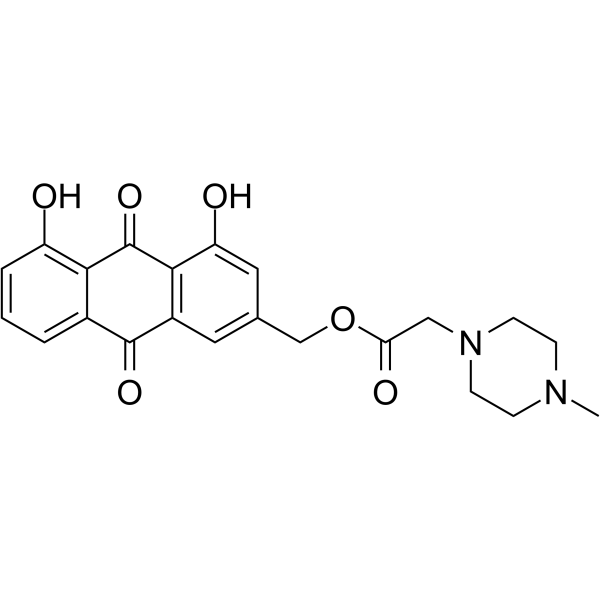
-
- HY-144765
-
|
|
NF-κB
Apoptosis
|
Neurological Disease
Inflammation/Immunology
|
|
NF-κB-IN-4 (compound 17) is a potent and BBB-penetrated NF-κB pathway inhibitor with blood brain barrier (BBB) permeability. NF-κB-IN-4 exhibits potential anti-neuroinflammatory activity with low toxicity. NF-κB-IN-4 can block the activation and phosphorylation of IκBα, reduce expression of NLRP3, and thus inhibit NF-κB activation. NF-κB-IN-4 can be used for neuroinflammation related diseases research .
|
-

-
- HY-N0191
-
-
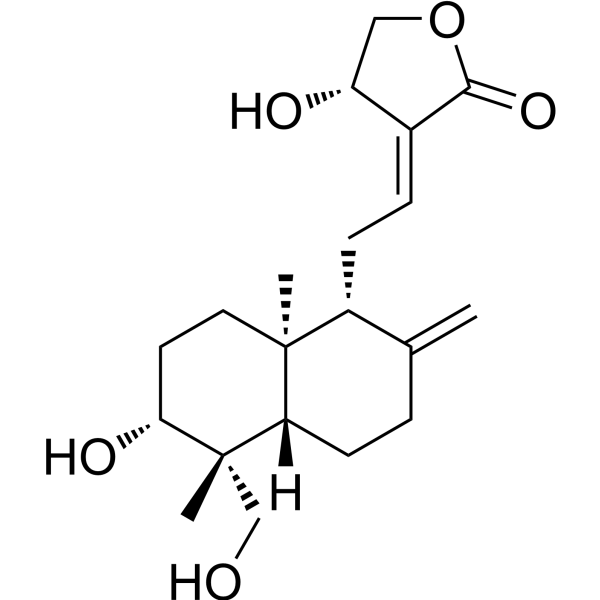
-
- HY-N0847
-
|
|
NF-κB
|
Others
|
|
Micheliolide could effectively attenuate the high glucose-stimulated activation of NF-κB, the degradation of IκBα, and the expression of MCP-1, TGF-β1 and FN in rat mesangial cells (MCs).
|
-
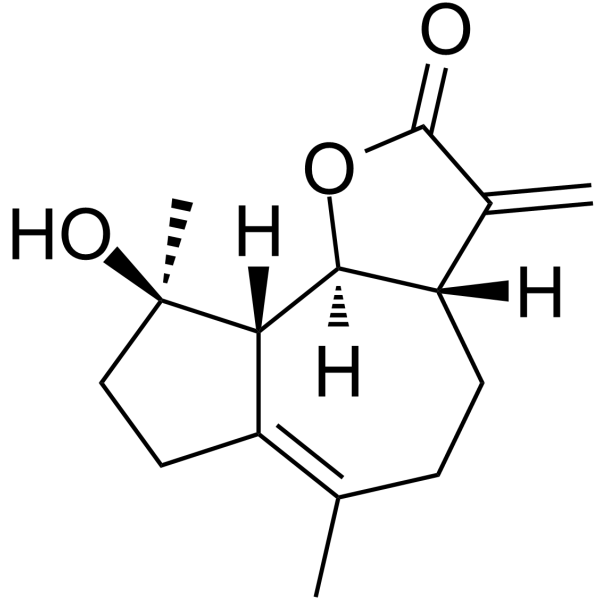
-
- HY-12383
-
|
|
COX
|
Neurological Disease
Inflammation/Immunology
|
|
Pelubiprofen, an orally active and non-steroidal anti-inflammatory drug, is a member of the 2-arylpropionic acid family and has relatively selective effects on COX-2 activity. Pelubiprofen inhibits COX activity and the transforming growth factor-β activated kinase 1-IκB kinase β-NF-κB pathway, and has significant anti-inflammatory and analgesic effects .
|
-

-
- HY-13453
-
BAY 11-7082
Maximum Cited Publications
281 Publications Verification
BAY 11-7821
|
IKK
Deubiquitinase
Autophagy
Apoptosis
NF-κB
|
Inflammation/Immunology
Cancer
|
|
BAY 11-7082 is an IκBα phosphorylation and NF-κB inhibitor. BAY 11-7082 selectively and irreversibly inhibits the TNF-α-induced phosphorylation of IκB-α, and decreases NF-κB and expression of adhesion molecules. BAY 11-7082 inhibits ubiquitin-specific protease USP7 and USP21 (IC50=0.19, 0.96 μM, respectively). BAY 11-7082 inhibits gasdermin D (GSDMD) pore formation in liposomes and inflammasome-mediated pyroptosis and IL-1β secretion in human and mouse cells .
|
-
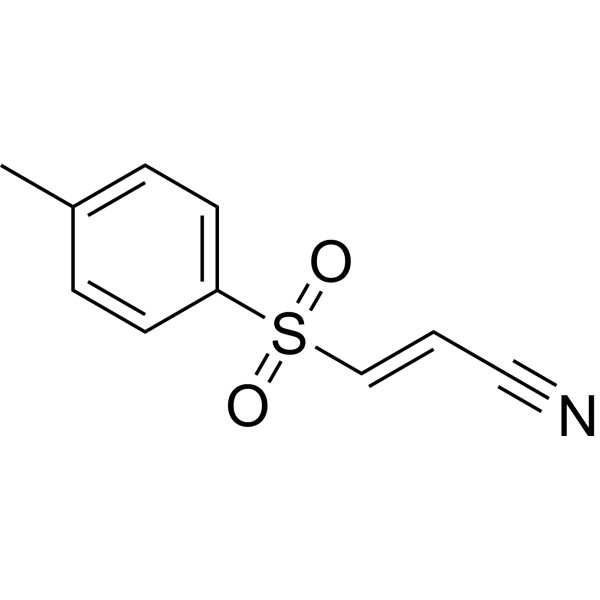
-
- HY-162316
-
|
|
NF-κB
|
Inflammation/Immunology
|
|
NF-κB-IN-15 (compound 14r) is a potent NF-κB inhibitor. NF-κB-IN-15 decreases the NO levels and inhibits the release of IL-6, TNF-α, and IL-1β in LPS (HY-D1056) -induced cells. NF-κB-IN-15 inhibits LPS-induced phosphorylation of p65 and degradation of IκBα. NF-κB-IN-15 shows anti-inflammatory activity has the potential for the research of acute lung injury (ALI) .
|
-

-
- HY-N12604
-
|
|
NF-κB
|
Others
|
|
Penicisteck acid F (Compound 2) is a Marine derived tanzanic acid derivative that is a NF-κB inhibitor. Penicisteck acid F inhibits osteoclast expression by decreasing RANKL-induced IκBα degradation, NF-κB p65 nuclear translocation, NFATc1 activation and nuclear translocation, and related mRNA expression. Penicisteck acid F can be used in osteoporosis research .
|
-
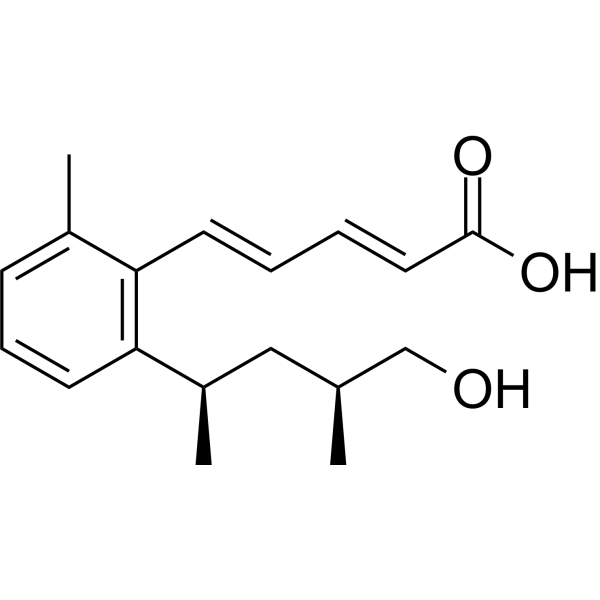
-
- HY-N0029
-
|
|
TNF Receptor
NF-κB
|
Inflammation/Immunology
|
|
Forsythoside B is a phenylethanoid glycoside isolated from Forsythia suspensa (Thunb.) Vahl, a Chinese folk medicinal plant for treating inflammatory diseases and promoting blood circulation. Forsythoside B could inhibit TNF-alpha, IL-6, IκB and modulate NF-κB.
|
-
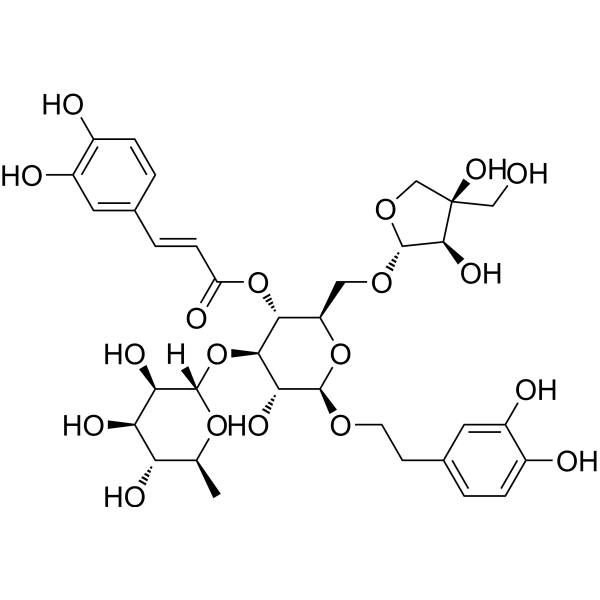
-
- HY-N1956
-
|
|
NF-κB
|
Metabolic Disease
|
|
Rubiadin-1-methyl ether is a natural anthraquinone isolated from Morinda officinalis How, and inhibits osteoclastic bone resorption via inhibition on the phosphorylation of NF-κB p65 and the degradation of IκBα as well as decrease in the nuclear translocation of p65 .
|
-

-
- HY-121471
-
|
|
Endogenous Metabolite
|
Metabolic Disease
|
|
Chrysoeriol is a kind of natural yellow ash, which can be used for heating plants Coronopus didymus. Chrysoeriol suppresses the JAK2/STAT3, IκB/p65, and NF-κB pathways, and has strong anti-inflammatory activity.
|
-

-
- HY-N3071
-
|
|
Apoptosis
Reactive Oxygen Species
|
Inflammation/Immunology
|
|
Picrasidine I is an anti-inflammatory and anti-osteoclastogenic dimeric alkaloid that can be isolated from Picrasma quassioides. Picrasidine I inducs cell cycle arrest, and triggers cell apoptosis by downregulats ERK and Akt pathways. Picrasidine I inhibits the activation of MAPKs, NF-κB and ROS generation, and suppresses the expression of c-Fos and NFATc1 .
|
-

-
- HY-158098
-
|
|
FGFR
|
Metabolic Disease
|
|
FGFR1 inhibitor-11 (compound 5g) binds to FGFR1, inactivation of its downstream ERK1/2 and IκBα/NF-κB signaling inhibited RANKL-induced osteoclastogenesis. FGFR1 inhibitor-11 has oral bioactivity .
|
-

-
- HY-111172
-
|
|
MMP
NF-κB
|
Cancer
|
|
Inotilone is an inhibitor of matrix metalloproteinase MMP-2 and MMP-9, to against metastatic in lung cancer cells. Inotilone enhances the activity of the antioxidant enzymes to support its anti-metastatic activity. Inotilone also inhibits IκBα phosphorylation and NFκB p65 nuclear translocation, involving in FAK, PI3K/AKT, MAPKs and NFκB pathways .
|
-
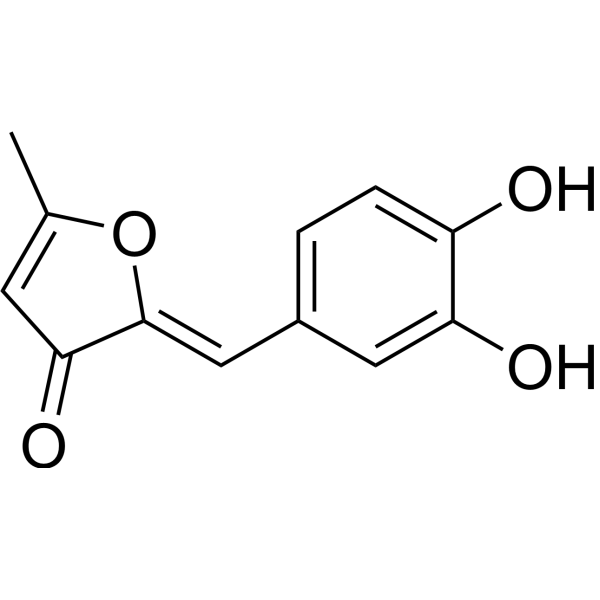
-
- HY-N2270
-
|
|
p38 MAPK
ERK
IKK
|
Inflammation/Immunology
|
|
Chicanine is a lignan compound of Schisandra chinesis, inhibits LPS-induced phosphorylation of p38 MAPK, ERK 1/2 and IκB-α, with anti-inflammatory activity .
|
-
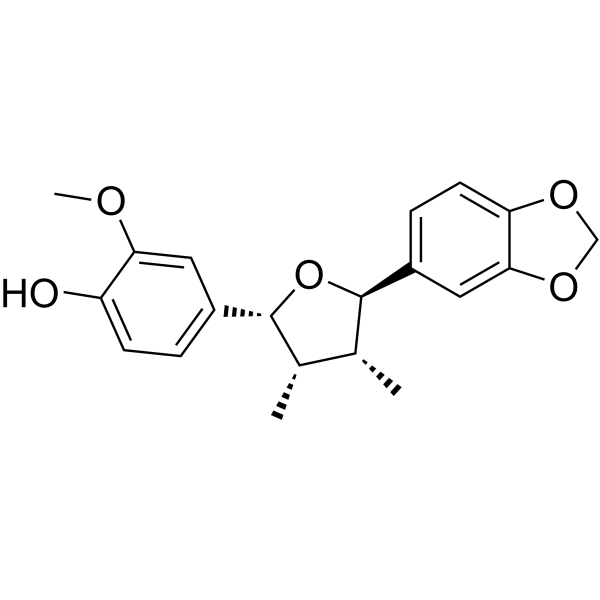
-
- HY-12383S
-
|
|
Isotope-Labeled Compounds
COX
|
Neurological Disease
Inflammation/Immunology
|
|
Pelubiprofen- 13C,d3 is the 13C- and deuterium labeled Pelubiprofen. Pelubiprofen, an orally active and non-steroidal anti-inflammatory drug, is a member of the 2-arylpropionic acid family and has relatively selective effects on COX-2 activity. Pelubiprofen inhibits COX activity and the transforming growth factor-β activated kinase 1-IκB kinase β-NF-κB pathway, and has significant anti-inflammatory and analgesic effects[1].
|
-
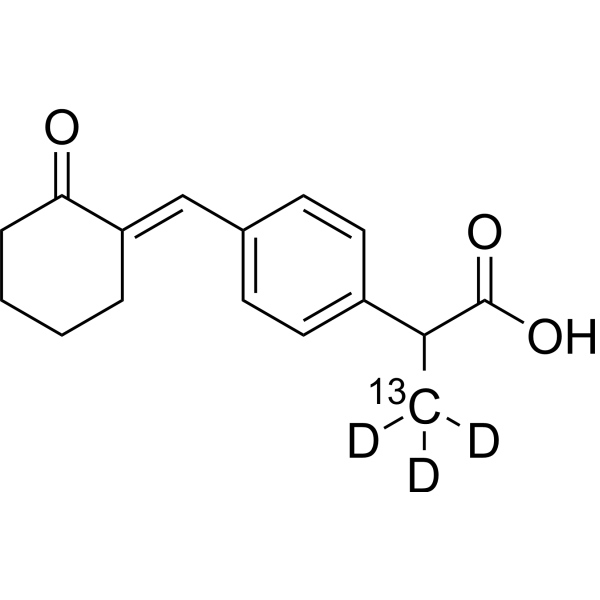
-
- HY-156297
-
|
|
Proteasome
|
Inflammation/Immunology
|
|
β5i-IN-1 is a potent and selective inhibitor of β5i with a IC50 of 8.463 nM. β5i-IN-1 releases TNF-α and IL-6 and influences the transcriptional activity of NF-κB. β5i-IN-1 can be used in study idiopathic pulmonary fibrosis .
|
-
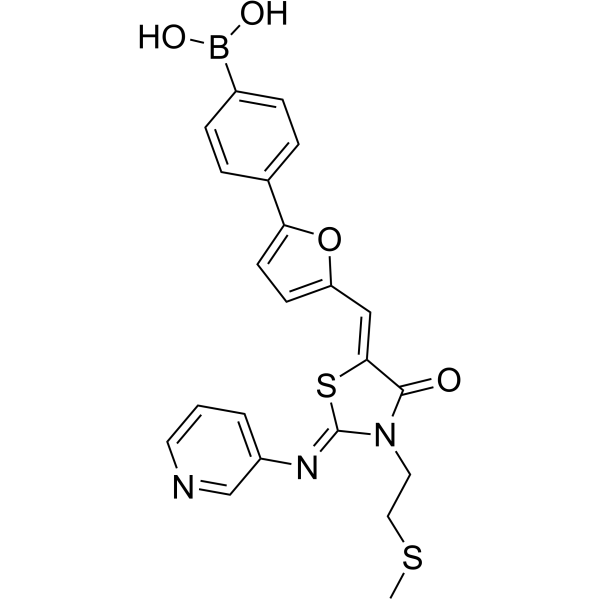
-
- HY-153320
-
|
|
MAP3K
|
Cancer
|
|
AZ-TAK1, an ATP-competitive small molecule inhibitor of TAK1, dephosphorylates TAK1, p38, and IκB-α in lymphoma cell lines .
|
-
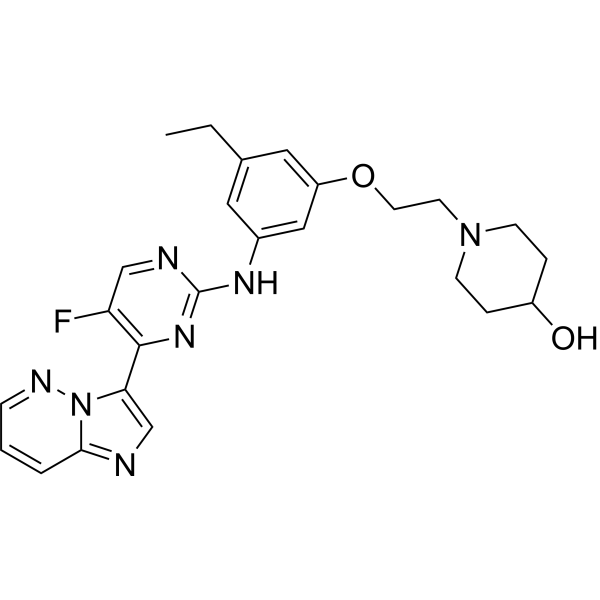
-
- HY-149331
-
|
|
TNF Receptor
Caspase
NF-κB
|
Inflammation/Immunology
|
|
TNF-α-IN-11 (Compound 10) is a TNF-α inhibitor with a KD value of 12.06 μM. TNF-α-IN-11 binds to TNF-α and blocks the activation of TNF-α-trigged caspase and NF-κB signaling pathway. TNF-α-IN-11 inhibits the phosphorylation of IκBα, as well as the nuclear translocation of NF κB p65. TNF-α-IN-11 can be used for research of TNF-α-mediated autoimmune diseases .
|
-
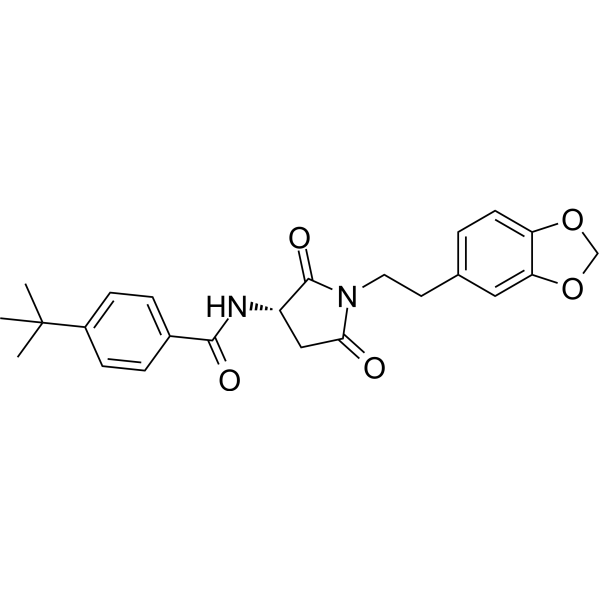
-
- HY-118922
-
|
|
TNF Receptor
|
Inflammation/Immunology
|
|
IW927 is a potent small molecule antagonist that blocks the binding of TNF-α to TNFRc1 with an IC50 value of 50 nM and disrupts TNFα-induced IκB phosphorylation with an IC50 value of 600 nM .
|
-
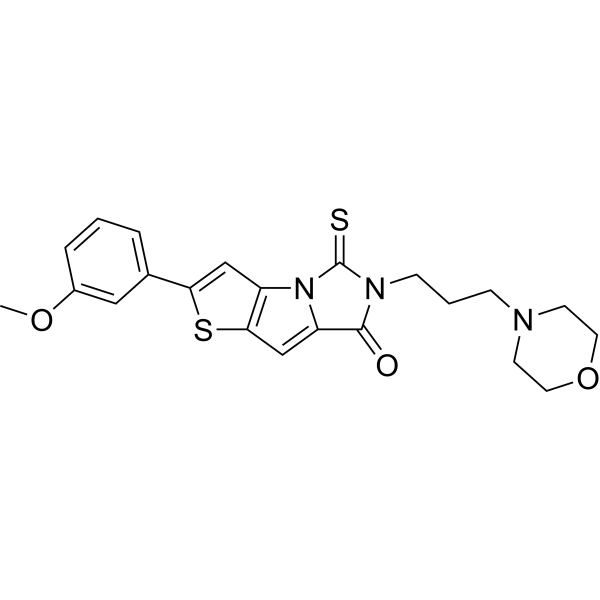
-
- HY-111193
-
|
3-Chloroprocainamide
|
NF-κB
Apoptosis
|
Cancer
|
|
Declopramide (3-Chloroprocainamide) is an orally active antitumor agent, which inhibits proliferation of cancer cells HL60 and K562, and inhibits tumor growth of human brain astrocytoma (T24) in mouse model. Declopramide induces apoptosis, inhibits NF-κB through inhibition of IκBα degradation. Declopramide serves also as chemosensitizer in research .
|
-

-
- HY-N0141
-
|
(-)-Parthenolide
|
NF-κB
Autophagy
Mitophagy
Apoptosis
|
Cancer
|
|
Parthenolide is a sesquiterpene lactone found in the medicinal herb Feverfew. Parthenolide exhibits anti-inflammatory activity by inhibiting NF-κB activation; also inhibits HDAC1 protein without affecting other class I/II HDACs.
|
-

-
- HY-N10206
-
|
|
Endogenous Metabolite
|
Cancer
|
|
11-epi-Chaetomugilin I is a metabolite found in Chaetomium globosum. 11-epi-Chaetomugilin I exhibits significant cytotoxic activity against the murine P388 leukemia cell line, the human HL-60 leukemia cell line, the murine L1210 leukemia cell line, and the human KB epidermoid carcinoma cell line .
|
-

-
- HY-N0170
-
-
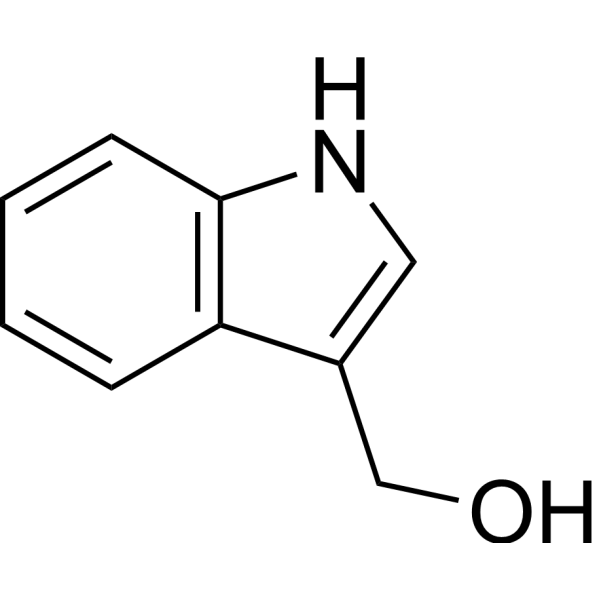
-
- HY-N10768
-
|
|
IKK
NF-κB
|
Inflammation/Immunology
|
|
1-Dehydro-[10]-gingerdione directly inhibits IKKβ activity by targeting the activation loop of IKKβ, thus disrupting IKKβ-catalysed IκBα phosphorylation in macrophages stimulated with agonists. 1-Dehydro-[10]-gingerdione inhibits LPS (HY-D1056)-induced NF-κB transcriptional activity. 1-Dehydro-[10]-gingerdione has the potential for NF-κB-associated inflammation and autoimmune disorders research .
|
-
![1-Dehydro-[10]-gingerdione](//file.medchemexpress.com/product_pic/hy-n10768.gif)
-
- HY-13295
-
|
Ethyl apovincaminate
|
Sodium Channel
IKK
Phosphodiesterase (PDE)
|
Cardiovascular Disease
Neurological Disease
Inflammation/Immunology
Cancer
|
|
Vinpocetine (Ethyl apovincaminate) is a derivative of the alkaloid Vincamine that blocks voltage-gated Na + channels. The IC50 value of Vinpocetine on direct IKK inhibition in the cell-free system is 17.17 μM. Vinpocetine is a phosphodiesterase (PDE) inhibitor and inhibits NF-κB-dependent inflammatory responses by directly targeting IκB kinase complex (IKK), and has been widely used for the treatment of cerebrovascular disorders .
|
-
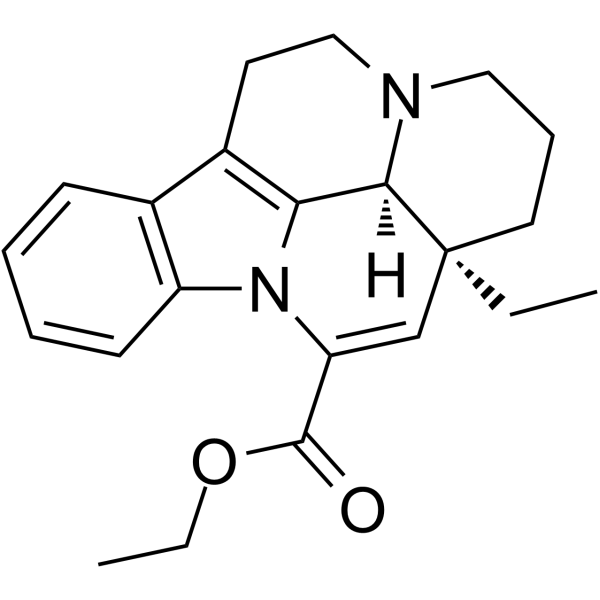
-
- HY-P1259
-
|
|
Proteasome
Bacterial
|
Inflammation/Immunology
|
|
PR-39, a natural proline- and arginine-rich antibacterial peptide, is a noncompetitive, reversible and allosteric proteasome inhibitor. PR-39 reversibly binds to the α7 subunit of the proteasome and blocks degradation of NF-κB inhibitor IκBα by the ubiquitin-proteasome pathway. PR-39 stimulates angiogenesis, inhibits inflammatory responses and significant reduces myocardial infarct size in mice .
|
-

-
- HY-N1818
-
|
3-Deoxysappanone B
|
p38 MAPK
|
Neurological Disease
Inflammation/Immunology
|
|
Deoxysappanone B (3-Deoxysappanone B) is a homoisoflavone compound isolated from Caesalpinia sappan L (Lignum Sappan). Deoxysappanone B has anti-neuroinflammatory and neuroprotective effects and inhibits the production of neuroinflammatory mediators by blocking the IκB kinase (IKK)-NF-κB and p38/ERK MAPK pathways. Deoxysappanone B can be used in disease studies of neuritis and inflammation-related neurological damage .
|
-
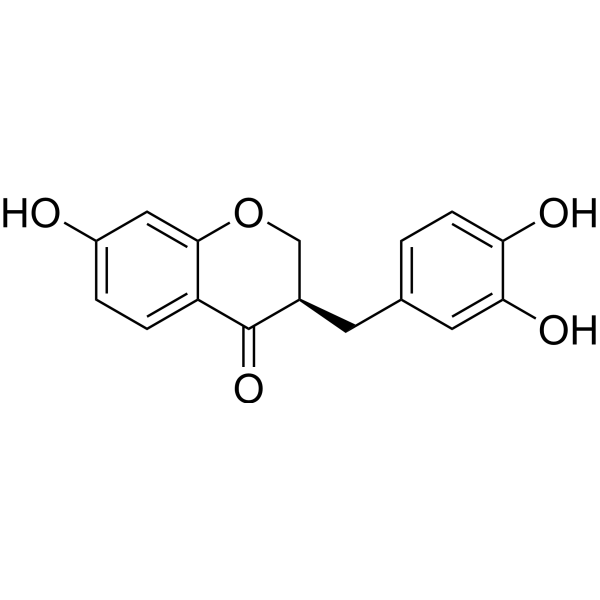
-
- HY-P1259A
-
|
|
Proteasome
Bacterial
|
Inflammation/Immunology
|
|
PR-39 TFA, a natural proline- and arginine-rich antibacterial peptide, is a noncompetitive, reversible and allosteric proteasome inhibitor. PR-39 TFAreversibly binds to the α7 subunit of the proteasome and blocks degradation of NF-κB inhibitor IκBα by the ubiquitin-proteasome pathway. PR-39 TFA stimulates angiogenesis, inhibits inflammatory responses and significant reduces myocardial infarct size in mice .
|
-
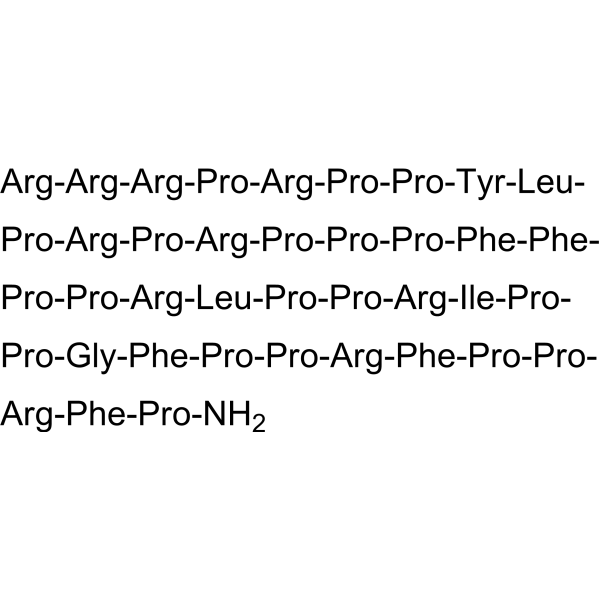
-
- HY-13295S
-
-
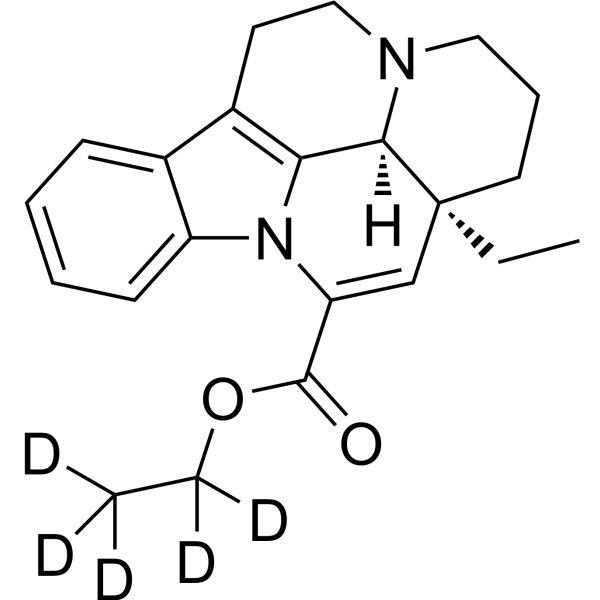
-
- HY-149472
-
|
|
NF-κB
PI3K
|
Inflammation/Immunology
|
|
Anti-osteoporosis agent-4 (Compound 11h) inhibits differentiation of primary osteoclasts. Anti-osteoporosis agent-4 attenuates RANKL-induced osteoclastogenesis. Anti-osteoporosis agent-4 inhibits osteoclast formation with an IC50 value of 358.29 nM. Anti-osteoporosis agent-4 inhibits PI3K/AKT and IκBα/NF-κB signaling pathway activation .
|
-
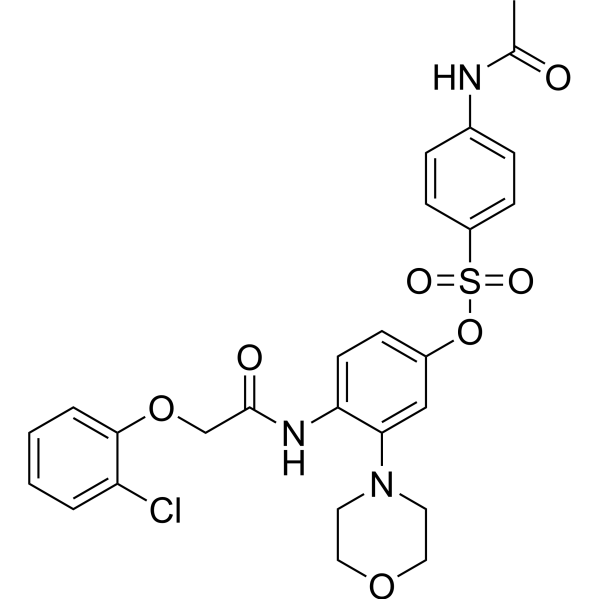
-
- HY-14180
-
|
|
IKK
|
Inflammation/Immunology
|
|
PHA 408 (PHA-408) is a potent, selective and orally active IκB kinase-2 (IKK-2) inhibitor. PHA 408 is a powerful anti-inflammatory agent against lipopolysaccharide (LPS)- and cigarette smoke (CS)-mediated lung inflammation .
|
-

-
- HY-13687
-
|
|
IKK
LRRK2
|
Inflammation/Immunology
|
|
IKK 16 is a selective IκB kinase (IKK) inhibitor for IKK2, IKK complex and IKK1 with IC50s of 40 nM, 70 nM and 200 nM, respectively. IKK16 also inhibits leucine-rich repeat kinase-2 (LRRK2) with an IC50 of 50 nM.
|
-

- HY-146201
-
|
|
Phosphodiesterase (PDE)
|
Others
|
|
1 a /5-hydroxynitrile rubber 7 receptor antagonist (5-HT1 a k i = 8 nm, kb= 0.04 nm; 5-nitrile rubber 7K I = 451 nm, kb= 460 nm) has pde4b/pde7a inhibitory activity (PDE4B ic50= 80.4 μ M; Pde7a chip 50= 151.3 μ M)。 Compound 22 has a very good ability of passive penetration of biofilm and high metabolic stability in vitro. In addition, 22's pharmacological evaluation showed its pre cognitive and antidepressant properties in rat behavioral tests.
|
-
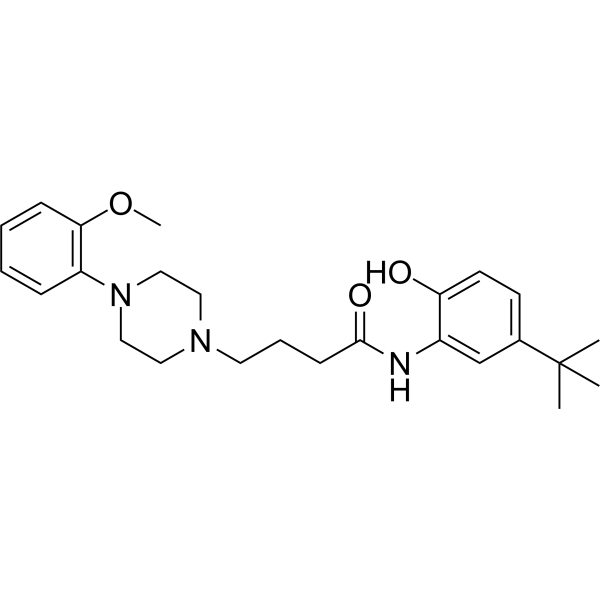
- HY-N0613
-
|
|
NF-κB
|
Inflammation/Immunology
|
|
Sauchinone is a diastereomeric lignan isolated from Saururus chinensis (Saururaceae). Sauchinone inhibits LPS-inducible iNOS, TNF-α and COX-2 expression through suppression of I-κBα phosphorylation and p65 nuclear translocation. Sauchinone has anti-inflammatory and antioxidant activity .
|
-

- HY-13295R
-
|
|
Sodium Channel
IKK
Phosphodiesterase (PDE)
|
Cardiovascular Disease
Neurological Disease
Inflammation/Immunology
Cancer
|
|
Vinpocetine (Standard) is the analytical standard of Vinpocetine. This product is intended for research and analytical applications. Vinpocetine (Ethyl apovincaminate) is a derivative of the alkaloid Vincamine that blocks voltage-gated Na + channels. The IC50 value of Vinpocetine on direct IKK inhibition in the cell-free system is 17.17 μM. Vinpocetine is a phosphodiesterase (PDE) inhibitor and inhibits NF-κB-dependent inflammatory responses by directly targeting IκB kinase complex (IKK), and has been widely used for the treatment of cerebrovascular disorders .
|
-

- HY-13687A
-
|
|
IKK
LRRK2
|
Inflammation/Immunology
|
|
IKK 16 hydrochloride is a selective IκB kinase (IKK) inhibitor for IKK2, IKK complex and IKK1 with IC50s of 40 nM, 70 nM and 200 nM, respectively . IKK16 also inhibits leucine-rich repeat kinase-2 (LRRK2) with an IC50 of 50 nM .
|
-

- HY-114730
-
|
|
IKK
|
Inflammation/Immunology
|
|
CGA-JK3 is CGA-JK3 is an ATP-competitive inhibitor of IKKβ-catalyzed kinase activity. CGA-JK3 inhibits IκBα phosphorylation in LPS (HY-D1056) - induced RAW 264.7 cells .
|
-
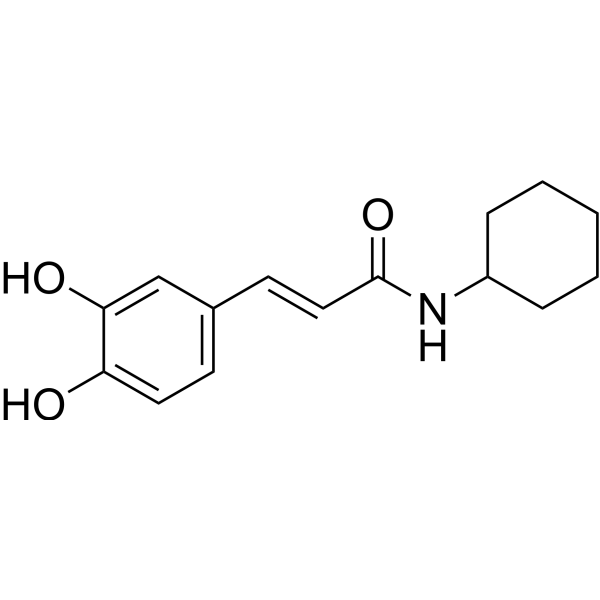
- HY-161329
-
|
|
NOD-like Receptor (NLR)
Reactive Oxygen Species
NF-κB
IKK
|
Inflammation/Immunology
|
|
NLRP3-IN-32 (compound 7a), a 3, 4-dihydronaphthalene-1(2H)-one derivative, is a potential NLRP3 inflammatory vesicles inhibitor. NLRP3-IN-32 can block the assembly and activation of NLRP3 inflammasome by down-regulating the expression of NLPR3 and apoptosis-associated speck-like protein containing a CARD (ASC), and inhibiting the production of reactive oxygen species (ROS) and other inflammatory mediators. NLRP3-IN-32 inhibits the phosphorylation of IκBα and NF-κB/p65 and the nuclear translocation of p65, thereby inhibiting NF-κB signaling .
|
-
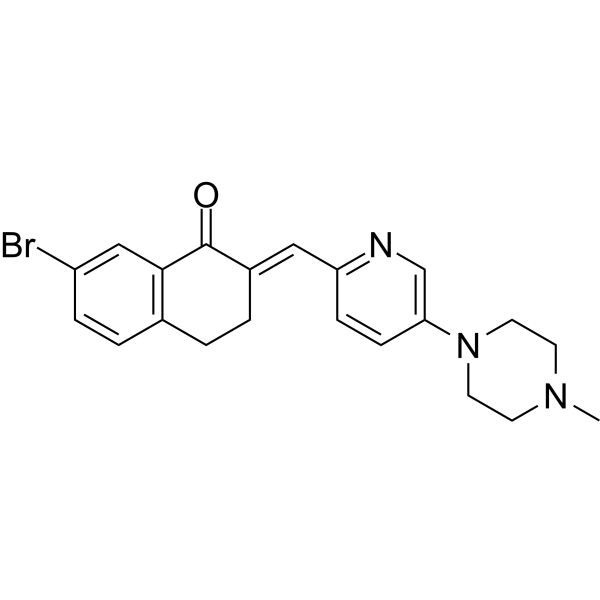
- HY-117066
-
CL075
2 Publications Verification
3M002
|
Toll-like Receptor (TLR)
|
Inflammation/Immunology
|
|
CL075 (3M002) is a selective TLR8 agonist with immunomodulating properties. CL075 triggers a MyD88-dependent signaling pathway to elicit production of inflammatory cytokines and type I interferons (IFNs) via activation of NF-κB and IRF7, respectively .
|
-
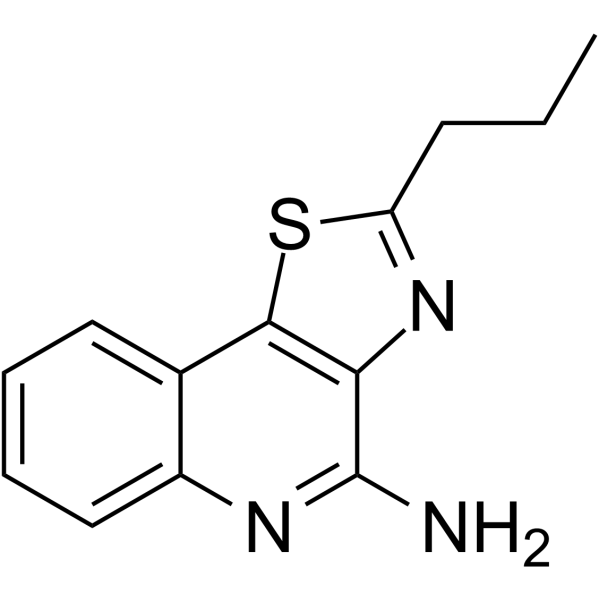
- HY-N0811
-
|
|
NO Synthase
COX
NF-κB
MEK
|
Inflammation/Immunology
|
|
Anemarsaponin B is a steroidal saponin. Anemarsaponin B decreases the protein and mRNA levels of iNOS and COX-2. Anemarsaponin B reduces the expressions and productions of pro-inflammatory cytokines, including TNF-a and IL-6. Anemarsaponin B inhibits the nuclear translocation of the p65 subunit of NF-κB by blocking the phosphorylation of IκBα. Anemarsaponin B also inhibits the phosphorylation of MAP kinase kinases 3/6 (MKK3/6) and mixed lineage kinase 3 (MLK3). Anti-inflammatory effect .
|
-
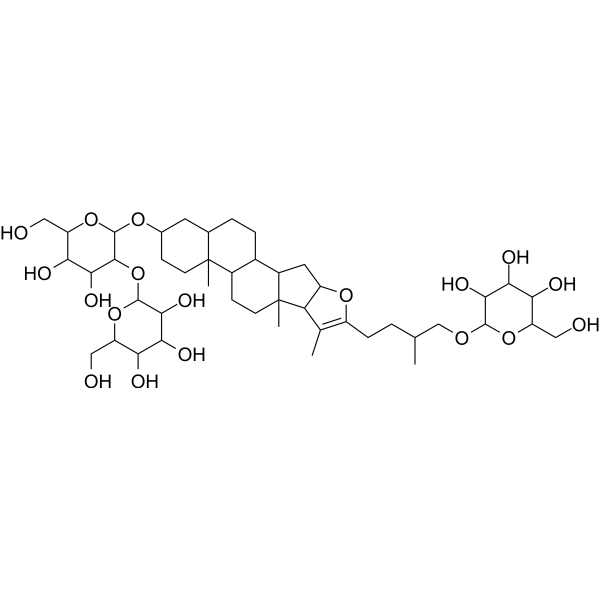
- HY-N0510
-
|
Aristolochic acid I; TR 1736
|
NF-κB
|
Cancer
|
|
Aristolochic acid A (Aristolochic acid I; TR 1736) is the main component of plant extract Aristolochic acids, which are found in various herbal plants of genus Aristolochia and Asarum. Aristolochic acid A significantly reduces both activator protein 1 (AP-1) and NF-κB activities. Aristolochic acid A reduces BLCAP gene expression in human cell lines .
|
-
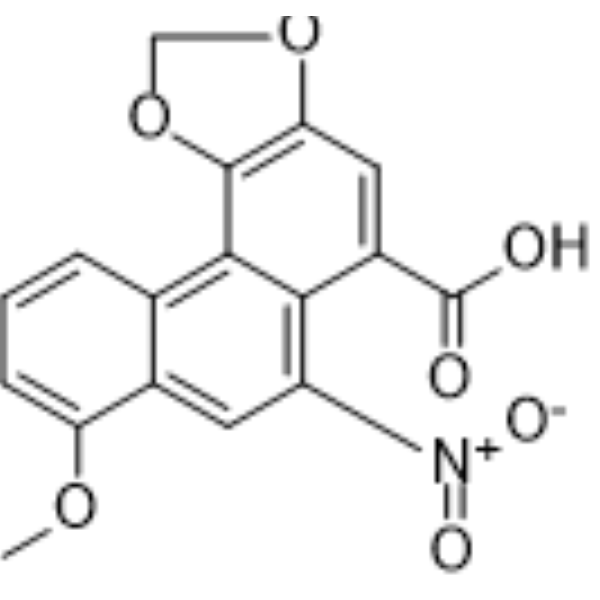
- HY-138050
-
|
(-)-Nyasol; (Z)-Hinokiresinol; cis-Hinokiresinol
|
NO Synthase
Bacterial
Fungal
Parasite
Leukotriene Receptor
|
Infection
Inflammation/Immunology
|
|
Nyasol ((-)-Nyasol) is an active compound that has antifungal, antibacterial, antileishmanial, hyaluronidase inhibition activities. Nyasol inhibits LTB4 binding to human neutrophils. Nyasol suppresses neuroinflammatory response through the inhibition of I-κB degradation in LPS (HY-D1056)-stimulated BV-2 microglial cells .
|
-

- HY-N6727
-
|
Aspergillin
|
Apoptosis
PKA
NF-κB
Bacterial
Fungal
Antibiotic
|
Infection
Inflammation/Immunology
Cancer
|
|
Gliotoxin is a secondary metabolite, the most abundant mycotoxin secreted by A. fumigatus, inhibits the phagocytosis of macrophages and the immune functions of other immune cells . Gliotoxin inhibits inducible NF-κB activity by preventing IκB degradation, which consequently induces host-cell apoptosis . Gliotoxin activates PKA and increases intracellular cAMP concentration; modulates actin cytoskeleton rearrangement to facilitate A. fumigatus internalization into lung epithelial cells . Gliotoxin is a potent NOTCH2 transactivation inhibitor, can effectively induce apoptosis of chronic lymphocytic leukemia (CLL) cells .
|
-

- HY-D0162
-
|
|
IKK
NF-κB
Apoptosis
|
Cancer
|
|
Malachite green hemioxalate is a triphenylmethane dye which can be used to detect the release of phosphate in enzymatic reactions. Malachite green hemioxalate is also a potent and selective inhibitor of IKBKE, and inhibits its downstream targets such as IκBα, p65 and IRF3. Malachite green hemioxalate exhibits antitumor activity in vitro and in vivo .
|
-

- HY-N0515
-
|
|
PPAR
NF-κB
Calcium Channel
|
Cardiovascular Disease
Inflammation/Immunology
|
|
Ophiopogonin D, isolated from the tubers of Ophiopogon japonicus, is a rare naturally occurring C29 steroidal glycoside . Ophiopogonin D is a CYP2J3 inducer that significantly inhibits Ang II induced NF-κB nuclear translocation, IκBα down-regulation, intracellular Ca 2+ overload and activation of pro-inflammatory cytokines by increasing the expression of CYP2J2/EETs and PPARα in human umbilical vein endothelial cells (HUVECs). Ophiopogonin D has been used to treat inflammatory and cardiovascular diseases for thousands of years .
|
-

- HY-157298
-
|
|
Apoptosis
|
Cancer
|
|
anti-TNBC agent-4 (compound 7) exhibits highly inhibitory activity against different TNBC cells with IC50s from 0.37 μM to 1.52 μM. anti-TNBC agent-4 inhibits IKKβ mediated phosphorylation of IκB and p65. anti-TNBC agent-4 induces TNBC cells apoptosis .
|
-

- HY-12286
-
|
|
Proteasome
Apoptosis
Autophagy
Caspase
Bcl-2 Family
NF-κB
PARP
|
Cancer
|
|
PI-1840 is a potent and selective chymotrypsin-like (CT-L) inhibitor for with an IC50 value of 27 nM. PI-1840 inhibits cell proliferation and arrest cell cycle at G2/M phase. PI-1840 induces apoptosis and induces autophagy. PI-1840 induces the accumulation of proteasome substrates p27, Bax, and IκB-α .
|
-

- HY-107592
-
|
|
IKK
STAT
Apoptosis
|
Inflammation/Immunology
Cancer
|
|
ACHP (compound 4j) is a selective and orally active IκB kinase inhibitor with IC50 values of 8.5 nM and 250 nM for IKKβ and IKKα, respectively. ACHP can effectively inhibit the STAT3 signaling pathway and induce cancer cell cycle arrest and apoptosis. ACHP shows anti-inflammatory activity in a mouse ear edema model. ACHP can be used in anti-inflammatory and anti-cancer (such as multiple myeloma and leukemia) studies .
|
-

| Cat. No. |
Product Name |
Type |
-
- HY-D0162
-
|
|
Fluorescent Dyes/Probes
|
|
Malachite green hemioxalate is a triphenylmethane dye which can be used to detect the release of phosphate in enzymatic reactions. Malachite green hemioxalate is also a potent and selective inhibitor of IKBKE, and inhibits its downstream targets such as IκBα, p65 and IRF3. Malachite green hemioxalate exhibits antitumor activity in vitro and in vivo .
|
| Cat. No. |
Product Name |
Target |
Research Area |
-
- HY-P1489
-
|
|
Peptides
|
Inflammation/Immunology
|
|
OVA Peptide(257-264) is a class I (Kb)-restricted peptide epitope of OVA, an octameric peptide can be from ovalbumin presented by the class I MHC molecule, H-2Kb.
|
-
- HY-P1489A
-
|
|
Peptides
|
Inflammation/Immunology
|
|
OVA Peptide(257-264) TFA is a class I (Kb)-restricted peptide epitope of OVA, an octameric peptide can be from ovalbumin presented by the class I MHC molecule, H-2Kb.
|
-
- HY-P1489B
-
|
|
Peptides
|
Inflammation/Immunology
|
|
OVA Peptide(257-264) acetate salt is a class I (Kb)-restricted peptide epitope of OVA, an octameric peptide can be from ovalbumin presented by the class I MHC molecule, H-2Kb .
|
-
- HY-P3715
-
|
|
Peptides
|
Inflammation/Immunology
|
|
OVA peptide mainly exists in egg white, it is a class I (Kb)-restricted peptide epitope of ovalbumin presented by the class I MHC (major histocompatibility complex) molecule, H-2Kb (class I genes of the mouse MHC). OVA peptide has been widely studied in allergy research .
|
-
- HY-P5410
-
|
|
Peptides
|
Others
|
|
OVA-Q4 Peptide is a biological active peptide. (Q4 Peptide (SIIQFEKL) is a variant of the agonist ovalbumin (OVA) peptide (257-264), SIINFEKL. OVA Peptide is a class I (Kb)-restricted peptide epitope of ovalbumin presented by the class I MHC (major histocompatibility complex) molecule, H-2Kb (class I genes of the mouse MHC).)
|
-
- HY-P5411
-
|
SIITFEKL, OVA (257-264) Variant
|
Peptides
|
Others
|
|
OVA-T4 Peptide (SIITFEKL, OVA (257-264) Variant) is a biological active peptide. (T4 peptide (SIITFEKL) is a variant of the agonist ovalbumin (OVA) peptide (257-264), SIINFEKL. OVA Peptide is a class I (Kb)-restricted peptide epitope of ovalbumin presented by the class I MHC (major histocompatibility complex) molecule, H-2Kb (class I genes of the mouse MHC).)
|
-
- HY-P2494
-
-
- HY-P1259
-
|
|
Proteasome
Bacterial
|
Inflammation/Immunology
|
|
PR-39, a natural proline- and arginine-rich antibacterial peptide, is a noncompetitive, reversible and allosteric proteasome inhibitor. PR-39 reversibly binds to the α7 subunit of the proteasome and blocks degradation of NF-κB inhibitor IκBα by the ubiquitin-proteasome pathway. PR-39 stimulates angiogenesis, inhibits inflammatory responses and significant reduces myocardial infarct size in mice .
|
-
- HY-P1259A
-
|
|
Proteasome
Bacterial
|
Inflammation/Immunology
|
|
PR-39 TFA, a natural proline- and arginine-rich antibacterial peptide, is a noncompetitive, reversible and allosteric proteasome inhibitor. PR-39 TFAreversibly binds to the α7 subunit of the proteasome and blocks degradation of NF-κB inhibitor IκBα by the ubiquitin-proteasome pathway. PR-39 TFA stimulates angiogenesis, inhibits inflammatory responses and significant reduces myocardial infarct size in mice .
|
-
- HY-P2527
-
|
|
Peptides
|
Inflammation/Immunology
|
|
Tyrosinase-related Protein 2 (TRP-2) (181-188) is a tyrosinase-related protein 2 (TRP-2)-derived peptide, corresponding to residues 180-188. Tyrosinase-related Protein 2 (TRP-2) (181-188) is the major reactive epitope within TRP-2 recognized by anti-B16 CTLs. Tyrosinase-related Protein 2 (TRP-2) (181-188) is a peptide conforming to the MHC class I H2-Kb binding motif .
|
| Cat. No. |
Product Name |
Category |
Target |
Chemical Structure |
| Cat. No. |
Product Name |
Chemical Structure |
-
- HY-12383S
-
|
|
|
Pelubiprofen- 13C,d3 is the 13C- and deuterium labeled Pelubiprofen. Pelubiprofen, an orally active and non-steroidal anti-inflammatory drug, is a member of the 2-arylpropionic acid family and has relatively selective effects on COX-2 activity. Pelubiprofen inhibits COX activity and the transforming growth factor-β activated kinase 1-IκB kinase β-NF-κB pathway, and has significant anti-inflammatory and analgesic effects[1].
|
-

-
- HY-13295S
-
|
|
|
Vinpocetine-d5 is the deuterium labeled Vinpocetine. Vinpocetine (Ethyl apovincaminate) is a derivative of the alkaloid Vincamine that blocks voltage-gated Na+ channels. The IC50 value of Vinpocetine on direct IKK inhibition in the cell-free system is 17.17 μM. Vinpocetine is a phosphodiesterase (PDE) inhibitor and inhibits NF-κB-dependent inflammatory responses by directly targeting IκB kinase complex (IKK), and has been widely used for the treatment of cerebrovascular disorders[1][2][3].
|
-

Your information is safe with us. * Required Fields.
Inquiry Information
- Product Name:
- Cat. No.:
- Quantity:
- MCE Japan Authorized Agent:
















































![1-Dehydro-[10]-gingerdione](http://file.medchemexpress.com/product_pic/hy-n10768.gif)


























